
How to Use 6A AC BREAKER: Examples, Pinouts, and Specs
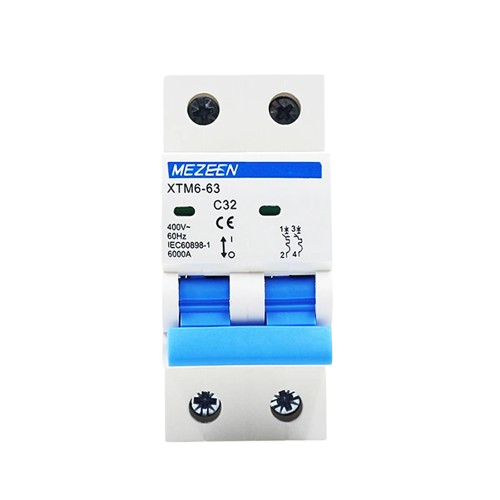
 Design with 6A AC BREAKER in Cirkit Designer
Design with 6A AC BREAKER in Cirkit DesignerIntroduction
The 6A AC Breaker (Manufacturer: AC, Part ID: BREAKER) is a protective device designed to safeguard electrical circuits by automatically interrupting the flow of current when it detects an overload or short circuit. This ensures the safety of connected devices and prevents potential damage to the circuit.
Explore Projects Built with 6A AC BREAKER
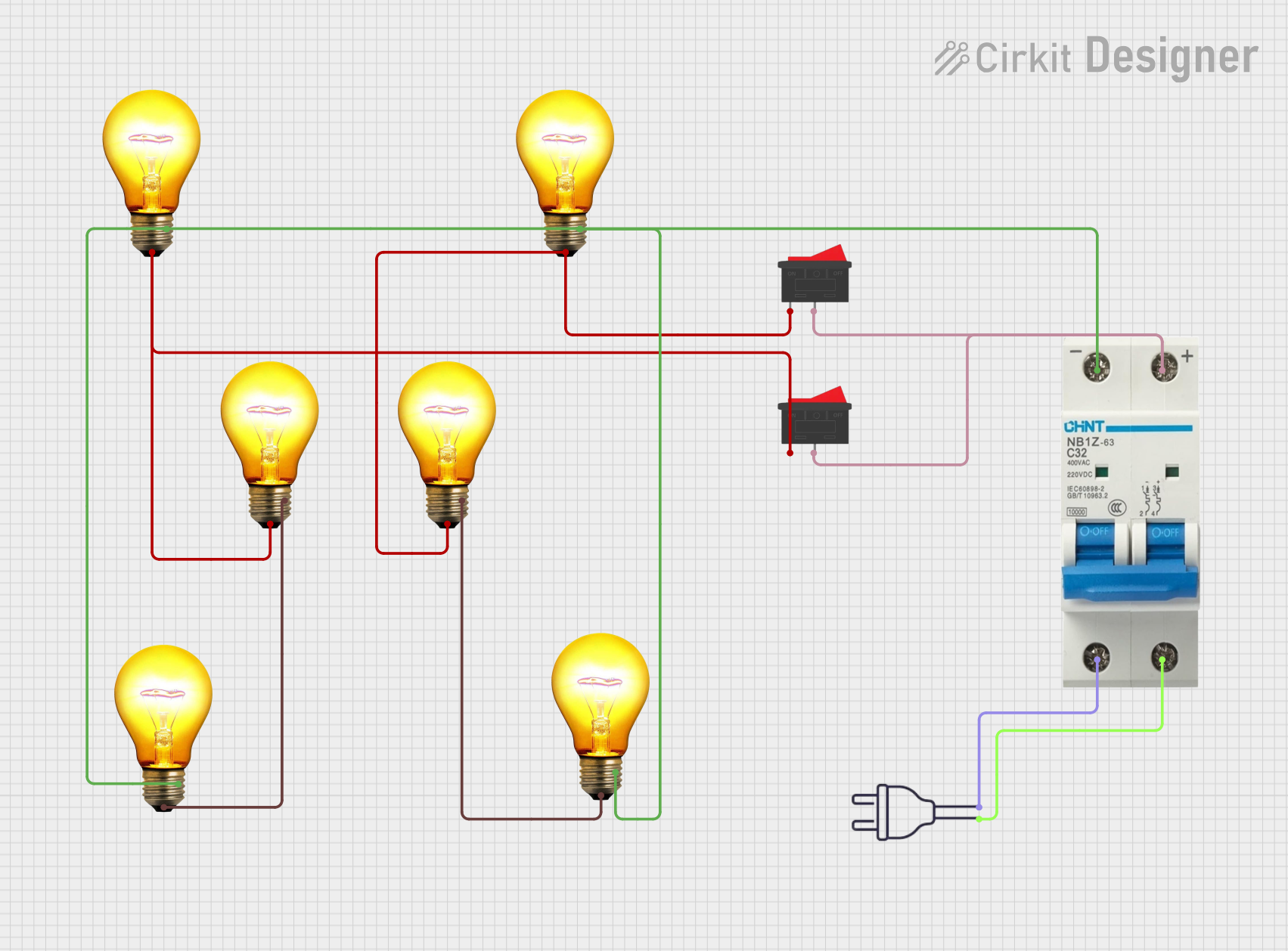
 Open Project in Cirkit Designer
Open Project in Cirkit Designer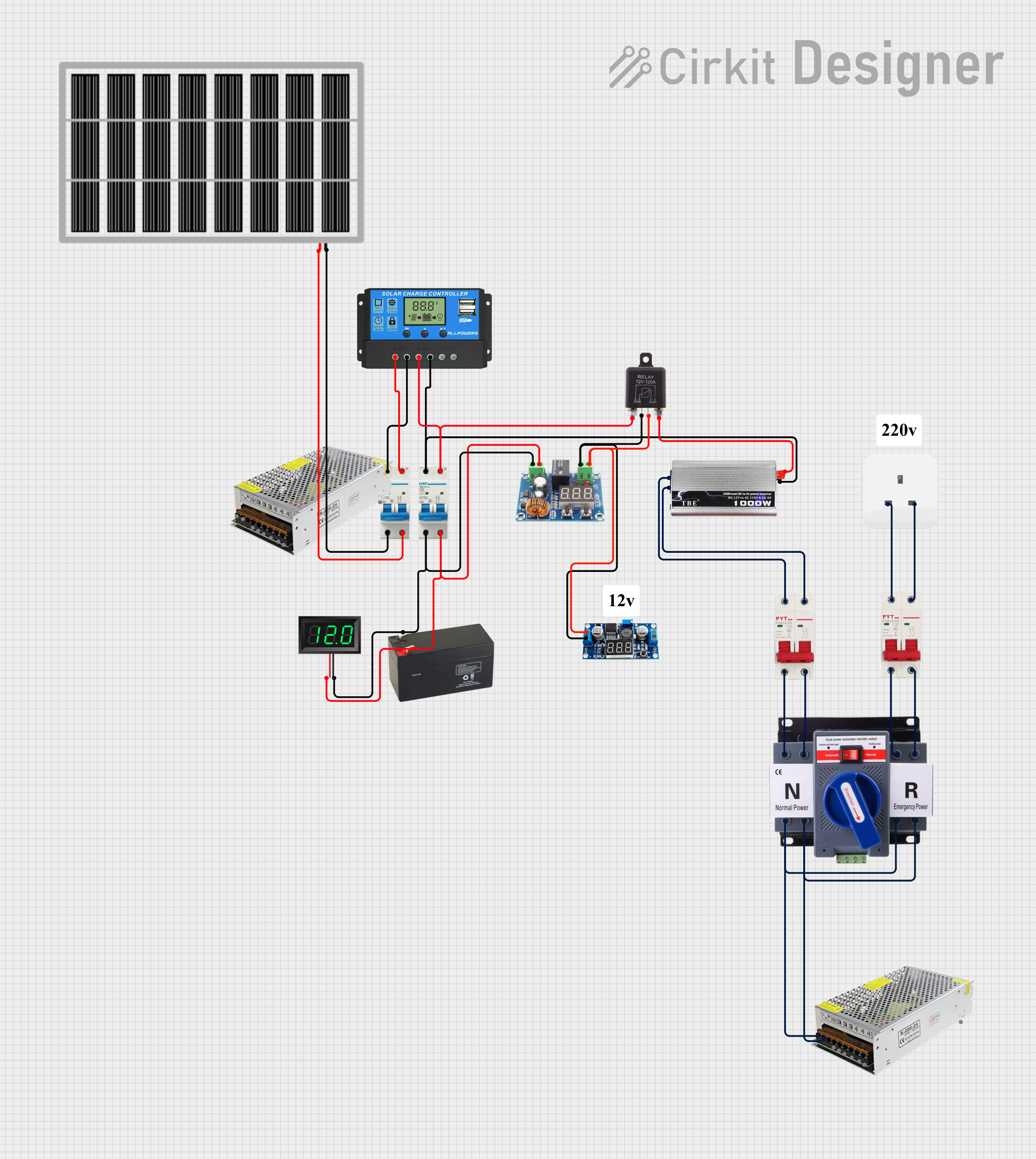
 Open Project in Cirkit Designer
Open Project in Cirkit Designer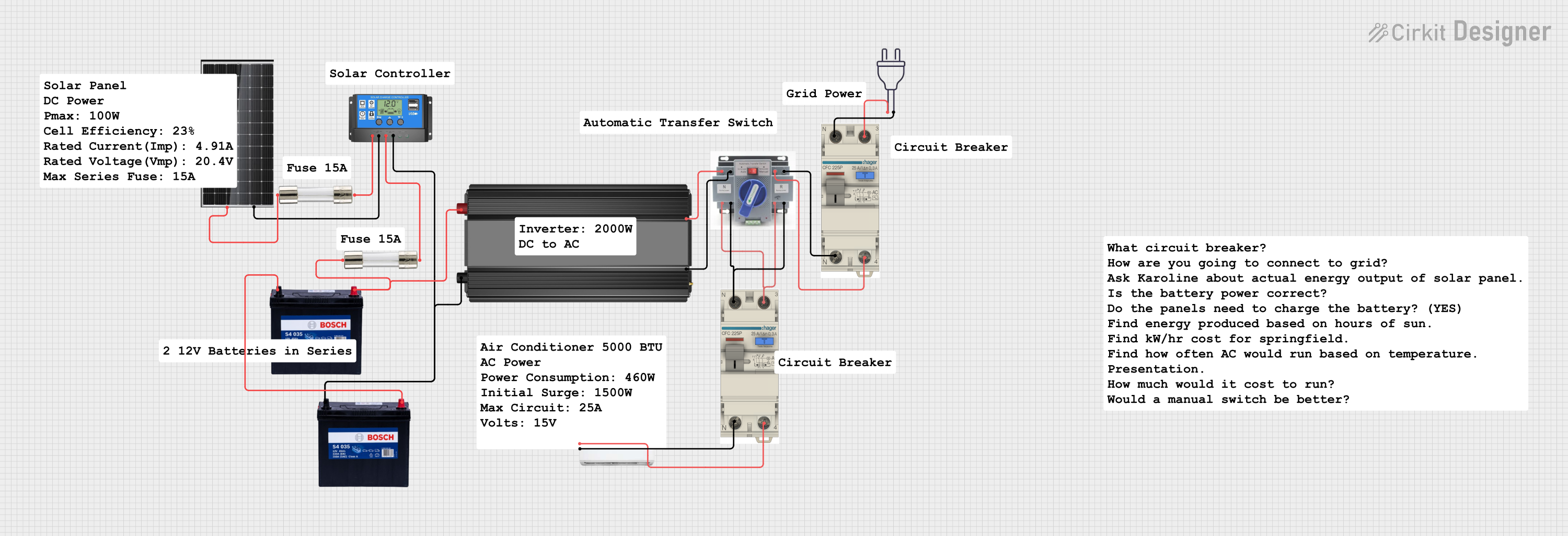
 Open Project in Cirkit Designer
Open Project in Cirkit Designer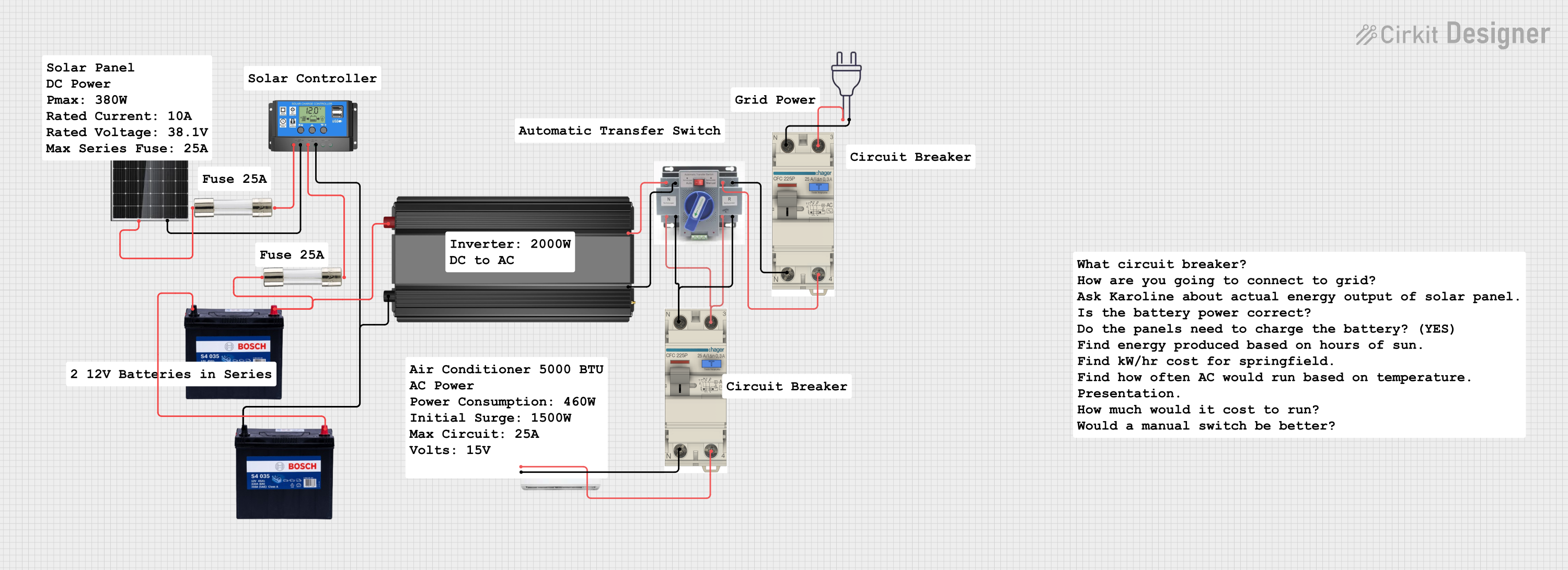
 Open Project in Cirkit Designer
Open Project in Cirkit DesignerExplore Projects Built with 6A AC BREAKER

 Open Project in Cirkit Designer
Open Project in Cirkit Designer
 Open Project in Cirkit Designer
Open Project in Cirkit Designer
 Open Project in Cirkit Designer
Open Project in Cirkit Designer
 Open Project in Cirkit Designer
Open Project in Cirkit DesignerCommon Applications and Use Cases
- Residential and commercial electrical systems for circuit protection.
- Industrial machinery to prevent damage from electrical faults.
- Power distribution panels in buildings.
- Protection of sensitive electronic equipment from overcurrent conditions.
Technical Specifications
The following table outlines the key technical details of the 6A AC Breaker:
| Parameter | Value |
|---|---|
| Rated Current | 6 Amperes (6A) |
| Rated Voltage | 230V AC |
| Frequency | 50/60 Hz |
| Breaking Capacity | 6 kA |
| Trip Mechanism | Thermal-Magnetic |
| Number of Poles | 1P (Single Pole) |
| Operating Temperature | -5°C to 40°C |
| Mounting Type | DIN Rail |
| Dimensions (LxWxH) | 18mm x 75mm x 80mm |
| Compliance Standards | IEC 60898-1 |
Pin Configuration and Descriptions
The 6A AC Breaker does not have traditional pins but instead features terminal connections for input and output wiring. The table below describes these terminals:
| Terminal | Description |
|---|---|
| Line (Input) | Connects to the incoming live (hot) wire. |
| Load (Output) | Connects to the outgoing live (hot) wire to the load. |
Usage Instructions
How to Use the 6A AC Breaker in a Circuit
Mounting the Breaker:
- Install the breaker on a standard DIN rail in the distribution panel.
- Ensure the breaker is securely locked into place.
Wiring the Breaker:
- Connect the incoming live (hot) wire to the Line (Input) terminal.
- Connect the outgoing live (hot) wire to the Load (Output) terminal.
- Ensure all connections are tight and secure to prevent arcing or loose connections.
Testing the Breaker:
- After installation, switch the breaker to the "ON" position.
- Test the breaker by pressing the test button (if available) to ensure proper functionality.
Operation:
- In the event of an overload or short circuit, the breaker will trip to the "OFF" position.
- To reset, first identify and resolve the fault, then switch the breaker back to the "ON" position.
Important Considerations and Best Practices
- Always ensure the breaker is rated for the specific current and voltage of your circuit.
- Do not exceed the rated current (6A) to avoid nuisance tripping or damage.
- Use appropriate wire sizes for the connected load to prevent overheating.
- Regularly inspect the breaker for signs of wear, damage, or loose connections.
- Disconnect power before performing any maintenance or wiring changes.
Arduino UNO Integration
While the 6A AC Breaker is not directly interfaced with microcontrollers like the Arduino UNO, it can be used in conjunction with an Arduino-based system to monitor circuit status. For example, you can use a current sensor to detect whether the breaker has tripped. Below is an example Arduino code snippet for monitoring current:
/*
Example: Monitoring current in a circuit protected by a 6A AC Breaker.
This code uses an ACS712 current sensor to measure current and detect
if the breaker has tripped (current drops to zero).
*/
const int sensorPin = A0; // Analog pin connected to the current sensor
const float sensitivity = 0.185; // Sensitivity for ACS712 (e.g., 185mV/A for 5A model)
const int zeroCurrentOffset = 512; // Sensor output at 0A (midpoint of 10-bit ADC)
void setup() {
Serial.begin(9600); // Initialize serial communication
Serial.println("6A AC Breaker Monitoring Started");
}
void loop() {
int sensorValue = analogRead(sensorPin); // Read sensor value
float voltage = (sensorValue / 1023.0) * 5.0; // Convert to voltage
float current = (voltage - 2.5) / sensitivity; // Calculate current in Amperes
// Print current reading
Serial.print("Current: ");
Serial.print(current);
Serial.println(" A");
// Check if current is zero (breaker tripped or no load)
if (current < 0.1) { // Adjust threshold as needed
Serial.println("Warning: Breaker may have tripped or no load detected!");
}
delay(1000); // Wait 1 second before next reading
}
Troubleshooting and FAQs
Common Issues and Solutions
| Issue | Solution |
|---|---|
| Breaker trips frequently without load. | Check for wiring faults or short circuits in the connected circuit. |
| Breaker does not trip during an overload. | Verify the breaker is functioning correctly; replace if faulty. |
| Loose connections at terminals. | Tighten all terminal screws securely to ensure proper contact. |
| Breaker feels hot during operation. | Ensure the connected load does not exceed the rated current (6A). |
| Difficulty resetting the breaker. | Identify and resolve the fault before attempting to reset the breaker. |
FAQs
Can the 6A AC Breaker be used for DC circuits?
No, this breaker is designed specifically for AC circuits. Using it in a DC circuit may result in improper operation or damage.What wire size should I use with this breaker?
Use wires rated for at least 6A, such as 1.5mm² (16 AWG) or larger, depending on the application and local electrical codes.How do I know if the breaker is faulty?
If the breaker does not trip during an overload or cannot be reset, it may be faulty and should be replaced.Can I use this breaker for three-phase systems?
No, this is a single-pole breaker designed for single-phase systems only.
By following this documentation, users can safely and effectively utilize the 6A AC Breaker in their electrical systems.